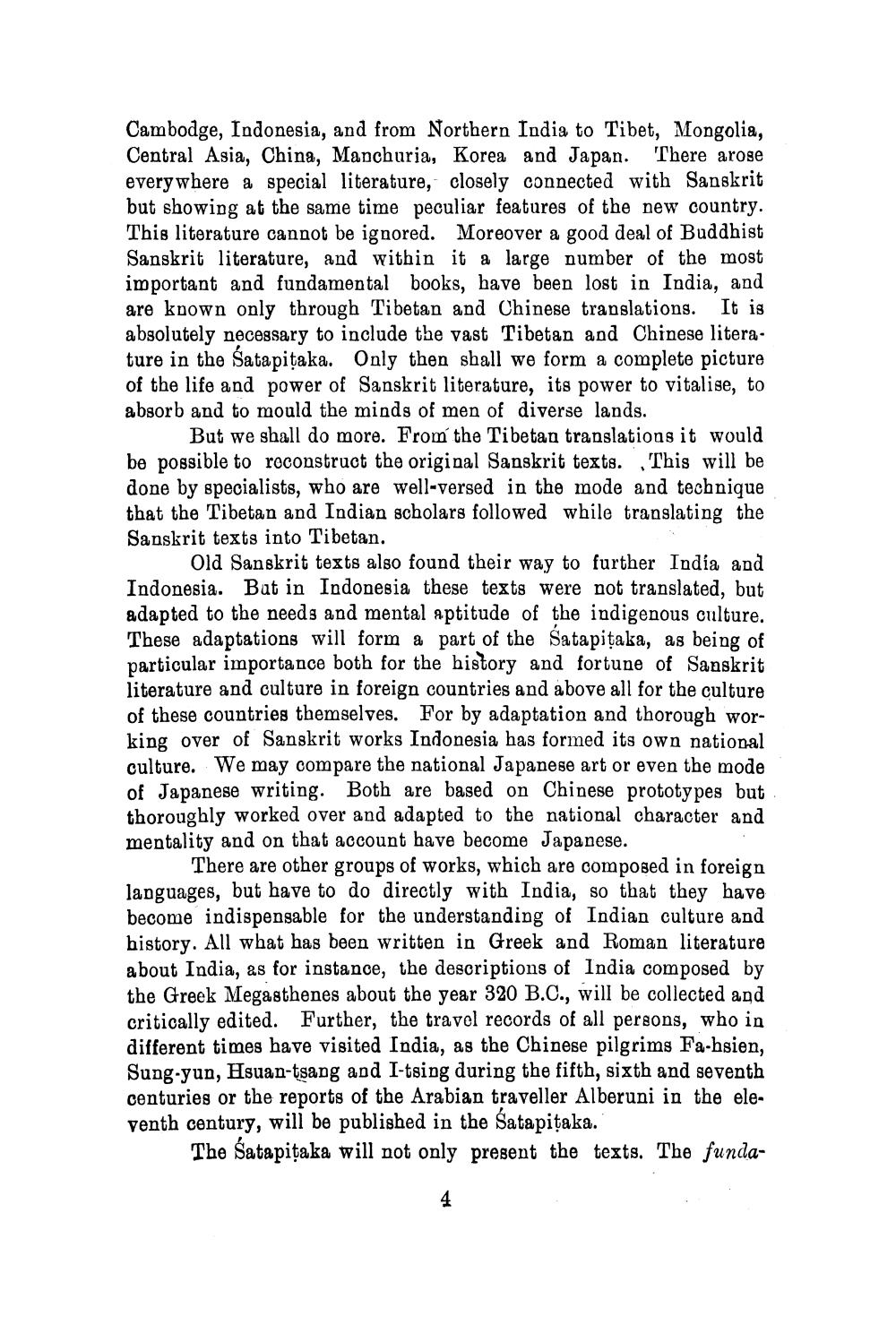________________ Cambodge, Indonesia, and from Northern India to Tibet, Mongolia, Central Asia, China, Manchuria, Korea and Japan. There arose everywhere a special literature, closely connected with Sanskrit but showing at the same time peculiar features of the new country. This literature cannot be ignored. Moreover a good deal of Buddhist Sanskrit literature, and within it a large number of the most important and fundamental books, have been lost in India, and are known only through Tibetan and Chinese translations. It is absolutely necessary to include the vast Tibetan and Chinese literature in the Satapitaka. Only then shall we form a complete picture of the life and power of Sanskrit literature, its power to vitalise, to absorb and to mould the minds of men of diverse lands. But we shall do more. From the Tibetan translations it would be possible to roconstruct the original Sanskrit texts. This will be done by specialists, who are well-versed in the mode and technique that the Tibetan and Indian scholars followed while translating the Sanskrit texts into Tibetan. Old Sanskrit texts also found their way to further India and Indonesia. But in Indonesia these texts were not translated, but adapted to the needs and mental aptitude of the indigenous culture. These adaptations will form a part of the Satapitaka, as being of particular importance both for the history and fortune of Sanskrit literature and culture in foreign countries and above all for the culture of these countries themselves. For by adaptation and thorough working over of Sanskrit works Indonesia has formed its own national culture. We may compare the national Japanese art or even the mode of Japanese writing. Both are based on Chinese prototypes but thoroughly worked over and adapted to the national character and mentality and on that account have become Japanese. There are other groups of works, which are composed in foreign languages, but have to do directly with India, so that they have become indispensable for the understanding of Indian culture and history. All what has been written in Greek and Roman literature about India, as for instance, the descriptions of India composed by the Greek Megasthenes about the year 320 B.C., will be collected and critically edited. Further, the travel records of all persons, who in different times have visited India, as the Chinese pilgrims Fa-bsien, Sung-yun, Hsuan-tsang and I-tsing during the fifth, sixth and seventh centuries or the reports of the Arabian traveller Alberuni in the eleventh century, will be published in the Satapitaka. The Satapitaka will not only present the texts. The funda




